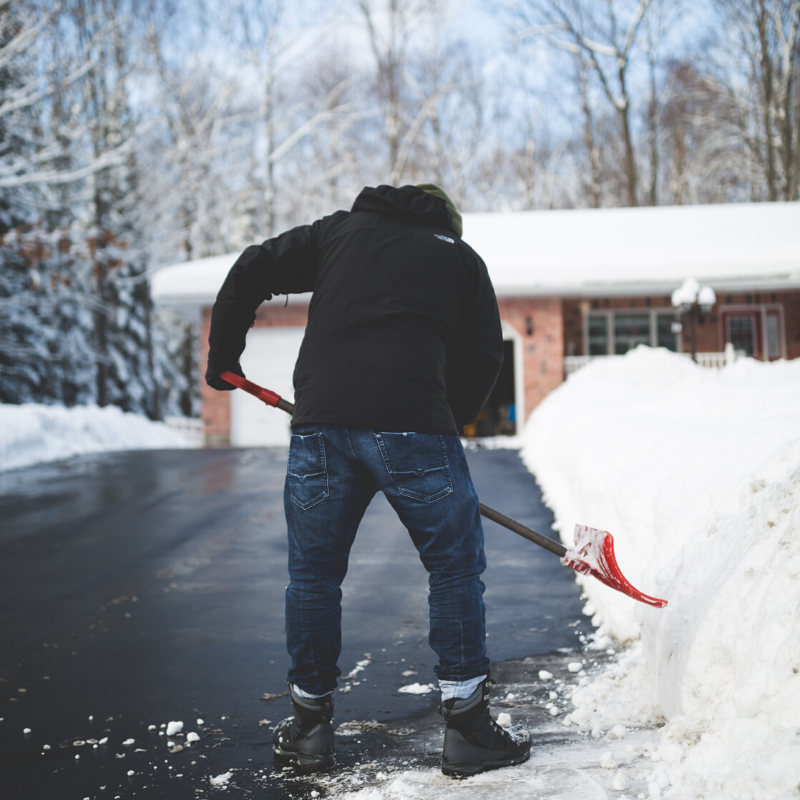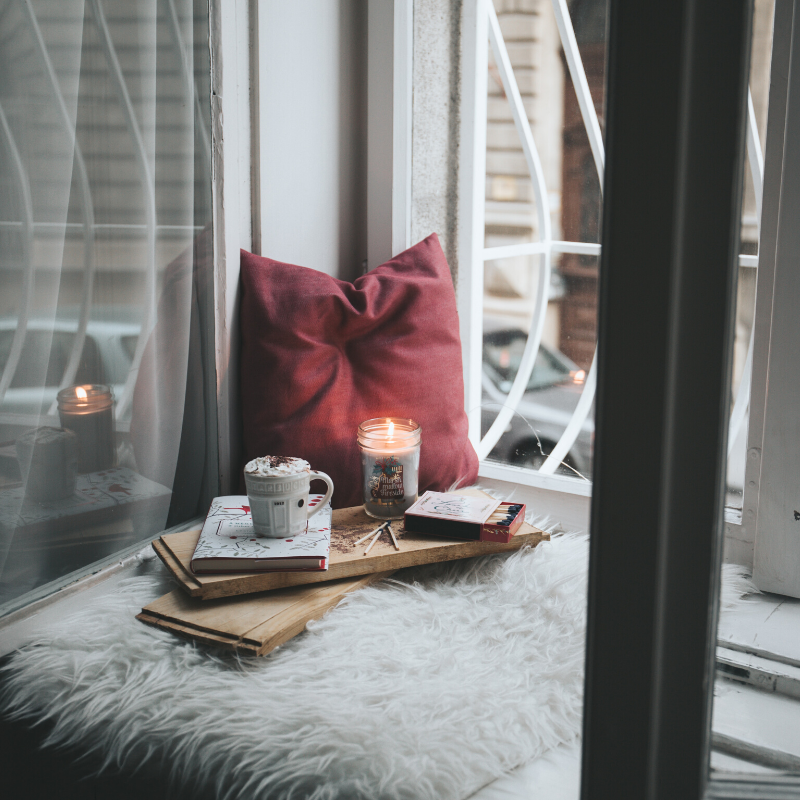How to Winterize Your Home Exterior
Before you start making your interior cozy, take these steps to make sure the outside of your home is prepared to withstand the brunt of the winter cold, snow and ice.

Clean your gutters. Much like the spring cleaning you do inside, plan on fall cleaning outside. Remove leaves and debris from roofs, gutters and around your home to prevent water and ice build-up and mold growth. While you’re outside, check for other signs of wear to the exterior of your home.
Prep your snow removal tools. Have your snow shovels and sidewalk salt ready for anything winter brings. Keeping your driveway clear from snow and ice is a must to keep you family safe, but clearing your sidewalk is your responsibility to your neighbors. Not only will you make it easier for neighbors to go for a stroll, but you’ll also be protecting them from slipping and falling — and you might be protecting yourself from any legal liabilities, too.
Winterize your outdoor faucets. You won’t be watering your grass or garden during the winter months, so turn off any outdoor faucets at their respective shutoff valves inside your home. After turning them off, open the faucet outside to let out any remaining water. Be sure to store hoses and sprinklers so any water left inside doesn’t freeze and damage them.
Prepare your lawn for winter. If the ground isn’t frozen, you can still get your lawn ready to handle the harsh cold and bounce back with warmer weather in the spring. Start with removing piles of leaves and fertilizing your lawn, and consider these other ways to keep your lawn healthy while it’s freezing cold outside.
Bring plants and furniture inside. Don’t let things like your outdoor furniture, grills or plants get destroyed by winter elements. Store items and bring in plants that could get damaged from the cold air, snow or ice. If you don’t have room indoors for the bigger items, make sure to cover them tightly with a tarp or other protective covering.
Install storm doors and windows. Add an extra layer of insulation — especially to older homes — by installing storm windows and doors. Otherwise consider installing a simple window film insulation for an affordable alternative to protect against window drafts or leaks.
How to Winterize Your Home Interior
Keeping the inside of your home warm isn’t just about comfort — it’s about the health and safety of your family, too. Winterizing the interior of your home protects your property and helps keep the elements out, which reduces heating bills and keeps your home sealed and warm.
We’ve gathered a handful of home winterizing tips to keep you happy, healthy and stress-free this season.
Look for air leaks. Winterizing against drafts will help keep your home nice and cozy and lower your heating bills. Things like winter-weather stripping and draft stoppers are easy to install and even easier to remove when warmer weather rolls around. To go the extra mile, only use your kitchen and bathroom exhaust fans when you absolutely have to — they pull hot air out of your home and can represent a small increase in your heating bill.
Winterize your pipes. Keeping your home’s pipes warm and insulated is key to avoiding the expensive mess of a frozen and burst pipe. Treating any existing water leaks and covering any exposed pipes with insulation sleeves should be your first steps, but there are plenty of other ways to ensure your pipes don’t freeze this winter.

Replace your furnace filters. Once the cold hits, you’ll want your furnace to perform its best — but a dirty furnace isn’t very efficient. Take the time to change your furnace filters throughout the winter to ensure it’s running at its best to keep you and your family comfortable all season long.
Set your thermostat for the winter. Paying careful attention to the temperature of your home can save you a lot of money in the long run. While you might prefer your home to be a toasty 71 degrees, it costs money to keep the temperature that high throughout the day. So while you’re at work, set it to something like 65 degrees and push it back up when you get home. While the savings might not seem like much in one bill, you’ll definitely notice at the end of the season.
Want even more convenience? Consider investing in a smart thermostat. Many will allow you to set them via your phone, and some will even program themselves to learn when you’re usually home and adjust the temperature for you.
Close your fireplace. Schedule fireplace inspection to make sure your chimney is closed all the way to prevent cold air from entering the house.
Get protection with smart home technology. Smart home tech doesn’t only save money on utilities, it can also serve as a monitor for water leaks, fire, intruders and more. And if that’s not a good enough reason to go high-tech, you may even earn a homeowners insurance discount for using qualified smart home technology! Win-win.
Practice fire safety. Chilly weather is so much more inviting if you can curl up by the fireplace, light some scented candles or do some roasted vegetables. But with all those activities comes an added risk of fire. Make sure you, your family and your home are ready for the season by preparing your fireplace and checking fire extinguishers and batteries in smoke detectors. Then, have a good old-fashioned fire drill so everyone knows what to do and where to go if the unexpected happens.
Happy 2020, Doris Gibbons, Owner of Gibbons Insurance Agency of American Family (513) 202-9922

Get a loan that meets your needs & expectations!
Whether it is purchasing your first home, improving your current home, making major purchases, or consolidating your debts; New Foundation Savings Bank has affordable loan options for you.
